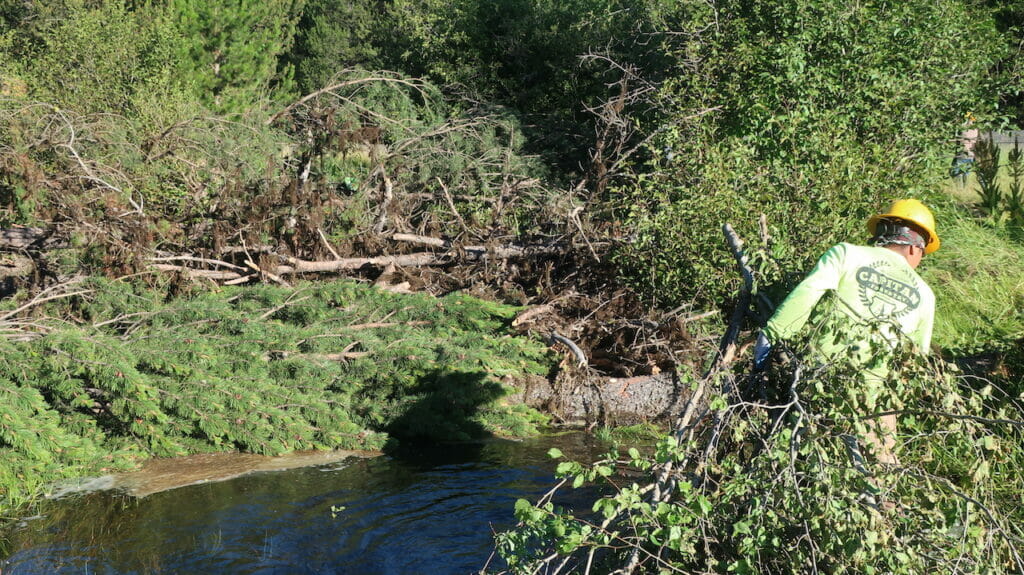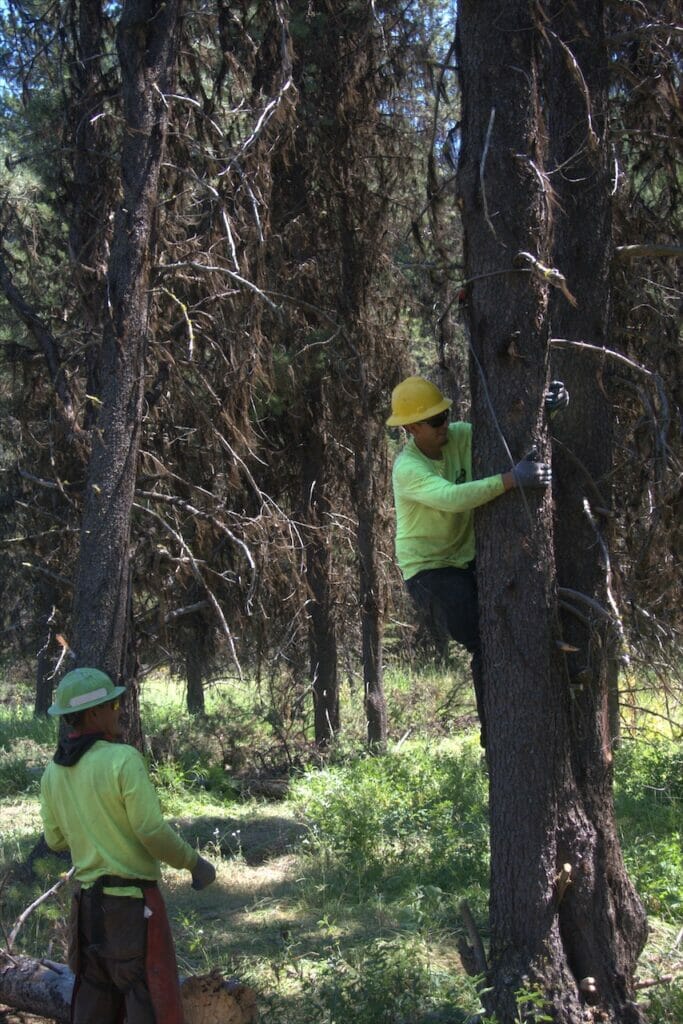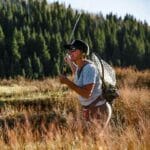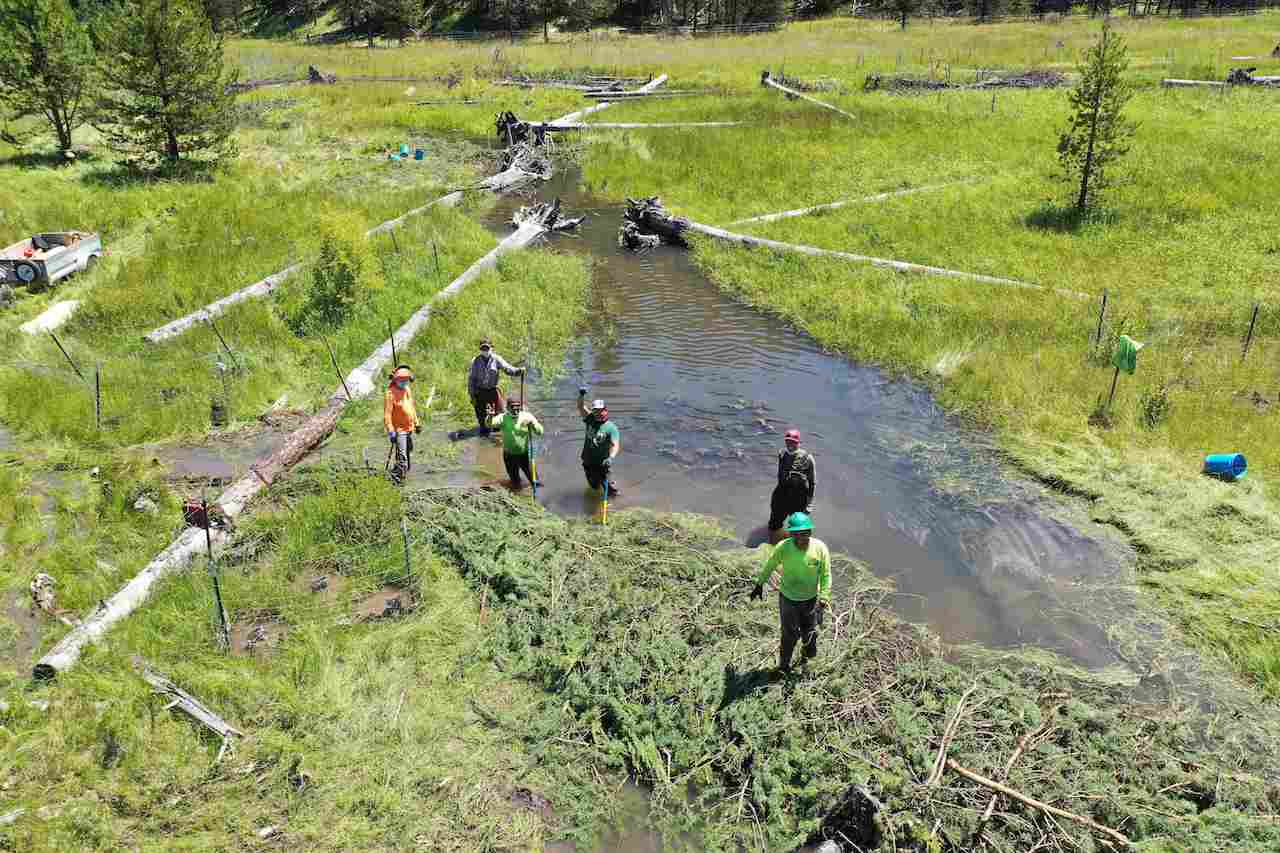Restoration work in Oregon couldn’t happen without Capitan Forestry. The Grande Ronde and North Fork of the John Day headwaters are critical habitat and special places to fish, and the collaboration between TU and Capitan is making it even better.
Capitan Forestry historically specialized in upland forest restoration work, but after partnering with TU’s aquatic restoration efforts in the area, they’ve jumped in and fully embraced on-the-ground aquatic and meadow restoration. Over the years, this has included riparian plantings, hand-based, in-stream wood placement and hand-based beaver dam analogue creation.

Project collaboration with Capitan Forestry is key to TU’s work in the headwaters of the Grande Ronde and North Fork of the John Day. These systems are home to steelhead, redband trout, bull trout, chinook salmon and numerous other native, coldwater fish species. With our focus on restoring and enhancing wetlands and meadow systems in this geography, our work creates critical, healthy habitat for these fish as well as all the other flora and fauna who call these systems home. But it also creates work for local communities and helps boost those economies.
“Capitan believes in creating healthy forest ecosystems—a place where plants, animals and people call home. It is a natural resource it strives to keep healthy, clean and beautiful,” said Crystal Rivera. “Recognizing that headwater systems are integral to overall forest health, Capitan expanded its capacity to the benefit of TU, multiple fish species, anglers, not to mention our employees.”

Capitan’s incredible work ethic and the crew’s positive attitudes make them a joy to work with in the field. Over the past few years, they’ve helped TU complete an enormous amount of work for fish and wildlife in these headwaters.
Thanks to Capitan and funding from the Oregon Watershed Enhancement Board, the Bonneville Power Administration, the Bureau of Reclamation, the National Forest Foundation, the Salmon Habitat Fund among others, healthy habitats for these coldwater species is thriving.



